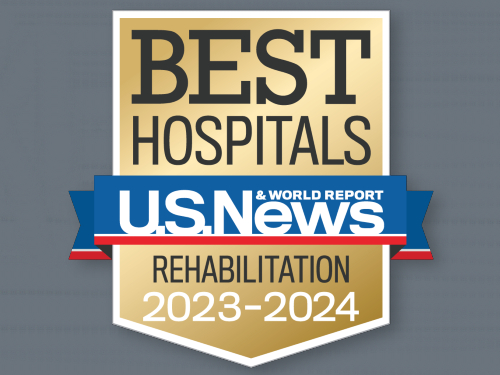Autonomic Dysreflexia Resources
Patients who have suffered a spinal cord injury are at risk of developing an emergency medical condition called autonomic dysreflexia.
What is Autonomic Dysreflexia?
Autonomic dysreflexia (AD) is an overresponse within the autonomic nervous system (ANS) that requires immediate medical attention. The ANS is the portion of the nervous system that controls involuntary functions like breathing, heartbeat, digestion, blood pressure, and pain control. Generally, patients with injuries in the mid-to-upper portion of the spinal cord are at risk of AD.
The most common causes of AD are bladder over-distension and constipation. These conditions place added stress on the nervous system and can lead to a dangerous rise in blood pressure. AD is a serious, potentially life-threatening condition that can result in a seizure, stroke, or cardiac dysfunction.
These resources contain helpful information for identifying and seeking help if you are experiencing this condition.
Medical Alert Autonomic Dysreflexia
I have a Spinal Cord Injury. I am susceptible to a medical emergency known as Autonomic Dysreflexia (AD), which results in a dangerous rise in blood pressure. It is caused by an unusual/painful stimulus below my injury level – including areas that do not feel pain. The most common causes are bladder over distension and constipation. My baseline blood pressure may be low, so a blood pressure more than 20mmHg above my usual baseline may indicate a serious problem. Blood pressures that may not be worrisome in able-bodied people may result in a seizure, stroke or cardiac dysfunction if AD is left untreated. Once the cause of AD is found, blood pressure returns back to normal on its own.
If you don't know what to do, call 911.
- BP above my baseline
- Slow or rapid pulse
- Pounding headache
- Flushing, paling, red blotches on skin
- Chills without fever, goose bumps
- Stuffy nose
- Anxious
- Seizure
- Large pupils
- Blurred vision
- Most common cause: Irritation of the bladder, usually due to overfill, spasm, infection, stones, plugged catheter or kinked tubing
- Second most common cause: constipation, over distension of the bowel.
- Pinched testicles, menstrual cramps, sexual activity or pregnancy
- Skin injuries: burns, pressure injuries, constant pressure on skin from clothing, binder, wrinkled sheets or shoes.
- Ingrown toenail, fractures, trauma below level of injury, abnormal bony growth or acute abdomen
- Painful procedure or surgery. Any painful stimulus.
- Extreme changes in temperature (overheating)
Hypertension resolves when the cause of pain stimulus is found.
- Raise my head and keep it elevated; put me in a sitting position.
- Take blood pressure, if higher than baseline, proceed to step
- Loosen clothing and remove tight clothing (abdominal binder, hose).
- Check testicles to make sure not pinched, make sure not sitting or lying on anything.
- Check catheter for kinks, clogged tube, full bag.
- If indwelling catheter, change it or flush with 60cc Normal Saline.
- If no catheter in place, catheterize me to immediately drain my bladder.
- Take blood pressure again, if still higher than 150 systolic or 90 diastolic (normal BP for person with SCI may be 90/60).
- Apply numbing medication, such as Dibucaine or Lidocaine (if available), insert finger into rectum and remove any stool.
- Check skin for irritation (keep my head up while changing positions)
- Check for ingrown toenail and apply lidocaine jelly.
- If still high blood pressure after 15 - 20 minutes, call 911 to go to Emergency Room with list of medications and this card.
Manually Assisted Coughing
Following a spinal cord injury, excess mucus and secretions can accumulate in the lungs. Paralysis of chest and abdominal muscles results in loss of ability to cough effectively. Assisted cough is necessary to aid the person in removing secretions from the lungs, and is performed by applying manual pressure to the upper abdomen as the person attempts to cough. It can be performed in a variety of ways, but the basic principles for each method are the same. If patient has an IVC filter, hand position changes to side.
Hand Placement:
- To Assist a Person in Bed: Place the heel of your hands below the rib cage with your thumbs resting together over the xiphoid process and your fingers pointing upwards over the ribs. Be careful not to exert pressure with thumbs over the xiphoid process.
- To Assist a Person in a Wheelchair (Heimlich type maneuver): Back the wheelchair up to a sturdy surface (e.g., wall, sofa) and lock the brakes to prevent the wheelchair from tilting over backwards. You may want to position yourself in front of the person in a squatting or kneeling position. Locate the xiphoid process and place the heel of one hand just below it. Place the other hand on top of the first, keeping the fingers open or interlocked. Be careful not to exert pressure with thumb or fingers over the xiphoid process.
Additional Resources for Managing Autonomic Dysreflexia
Contact Us
If you have questions or are looking for more information, please complete the form below and we will contact you.
